Photos with this report (click to enlarge) | |||
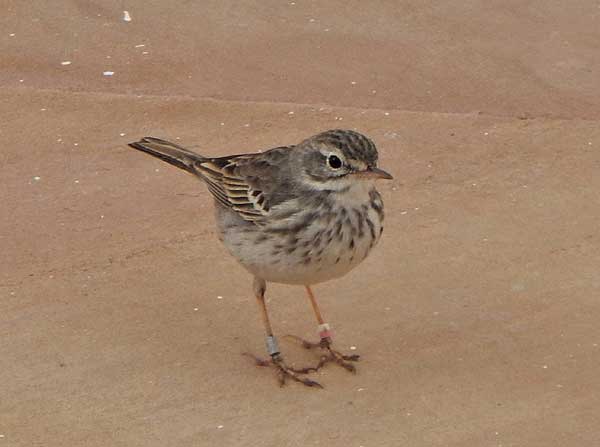 Berthelot's Pipit |
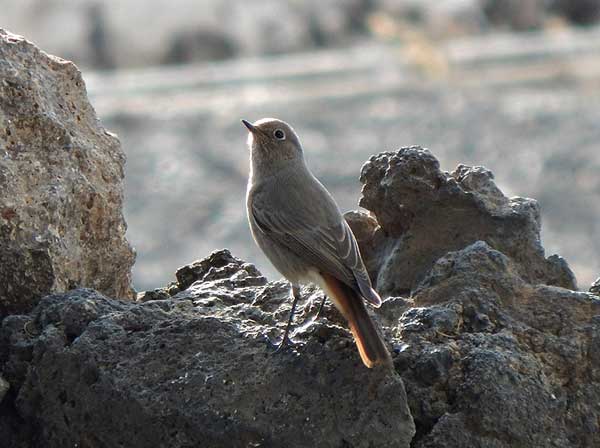 Black Redstart |
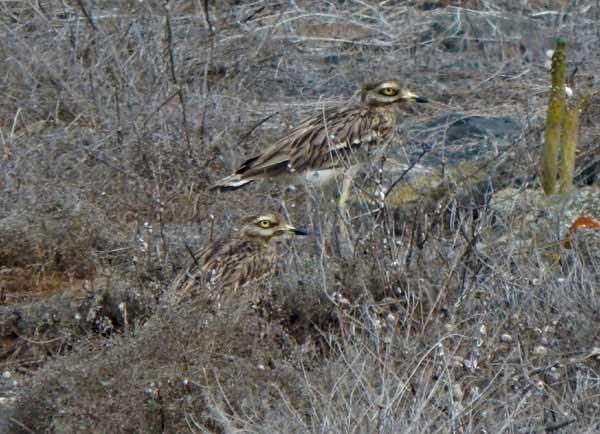 Stone Curlew |
|
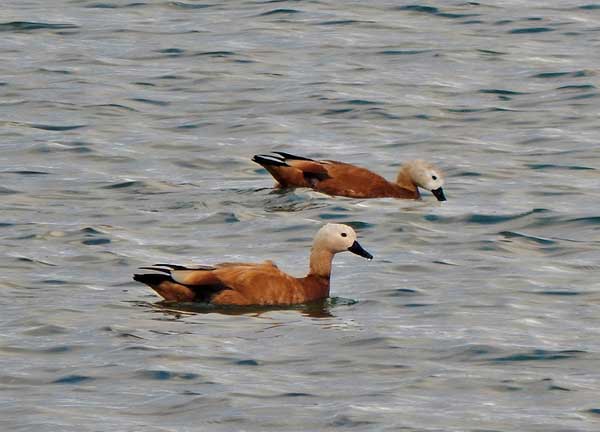 Ruddy Shelduck |
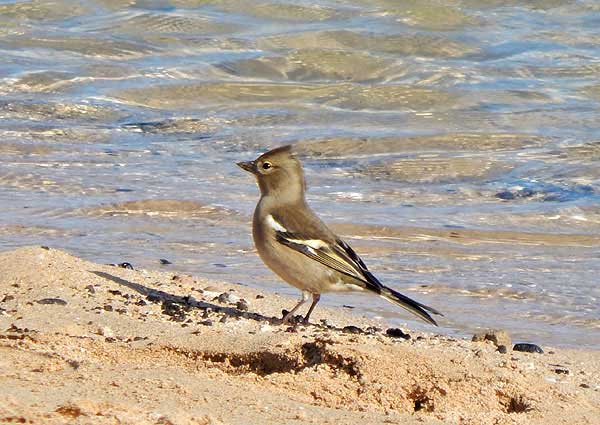 Chaffinch |
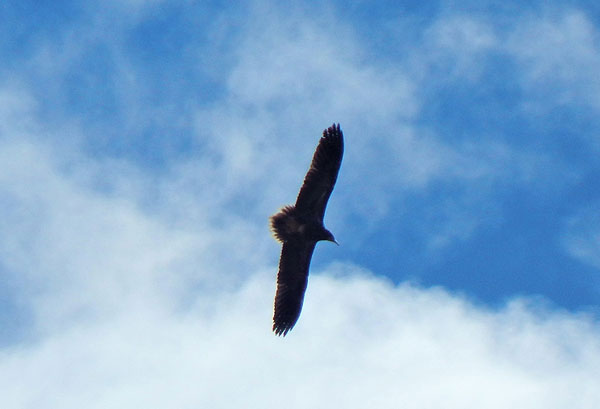 Egyptian Vulture |
|
We spent 4 nights in an Air B’n’B just south of Orzola in the far north of Lanzarote and 3 nights at Vistas Salinas in La Hoya overlooking las Salinas de Janubio in the south. The flights were by RyanAir (Edinburgh-Lanzarote return) and we rented a car from Cicar for the week (ca £100).
We took it slowly and aimed to find many of the specialities in the northern half of the island, followed by desert and lagoon species in the south. We visited the island of La Graciosa using the local daily ferries from Orzola. We saw 62 species and had great views of all the target species: Houbara Bustard, Cream-coloured Courser, Stone Curlew, Barbary Partridge, Plain Swift, Canary, African Blue Tit and Berthelot’s Pipit, plus bonus Egyptian Vulture and Barbary Falcon. Scarcer species seen included: Slender-billed Gull, Black-necked Grebe, Black Redstart, Chaffinch, Greenfinch, Goldfinch and Song Thrush.
Itinerary
• 14 Nov: Drove from airport to Orzola
• 15 Nov: Orzola area
• 16 Nov: Haria, Ermita de las Nieves, El Bosquecillo, Mirador del Rio
• 17 Nov: Day-tip to La Graciosa
• 18 Nov: Yé and Montana Corona, Jameos del Agua, drove to La Hoya
• 19 Nov: Salinas/Laguna de Janubio, Rubicón Plain, El Golfo
• 20 Nov: Caballo Lanzarote (SE of Uga), Tias Golf, Femés, Laguna de Janubio, Los Hervideros
Principal sites
The main sites we visited are listed below.
1) Orzola area:
a) Vegetated lava flows and gardens south of the town around our accommodation at “Marisa Home” held lots of Berthelot’s Pipit (numerous at most sites on the island), Linnet, Spanish Sparrow, Kestrel, Collared Dove, Rock Dove (purer birds at remoter sites), Hoopoe, Spectacled Warbler, Sardinian Warbler, Great Grey Shrike and occasional wandering pairs of African Blue Tit. There were a few wintering Blackcaps here, as well as a Black Redstart, a couple of Laughing Doves, a Turtle Dove, a Chiffchaff, a Chaffinch (16th) and a male Greenfinch (16th). Yellow-legged Gulls flew through every morning as did a pair of Ruddy Shelducks looking for water in the small-holdings, a couple of pairs of Ravens were often seen/heard and a covey of a dozen plus Barbary Partridges flushed at close range from an area of small-holdings where we stayed. An Eastern Canary Gecko was attracted to our outside light.
b) Orzola town had a noisy colony of Spanish Sparrows and a bonus House Martin (15th), whilst the rocky coastline of the harbour and further east held many Common Sandpipers and Yellow-legged Gulls, plus the odd Whimbrel, Curlew and Little Egret. The huge cliffs to the west are sometimes home to Red-billed Tropicbirds, but we failed to see these amongst large numbers of Yellow-legged Gulls there. A single Cory’s Shearwater passed offshore.
2) Haria and the Famara cliffs:
a) Haria was a nightmare to negotiate on a Saturday with roads closed for a market and for various cycling and running races. We eventually found our way up through the hairpin bends on the LZ-10 to the SW of the town and stopped at the overlooks beyond. It was very windy with some rain and we saw little (it’s a site for Canary) except a Barbary Falcon hunting along the hillside and the odd Hoopoe etc.
b) Ermita de las Nieves – despite the wind we pick up some Short-toed Larks in a cultivated field north of the church along with many Linnets and Berthelot’s Pipits.
c) Los Bosquecillo – this small patch of scrubby woodland is the largest on the island but looked in poor shape with many of the larger bushes / trees cut down after a relatively recent fire. This site was also very windy, but we picked up a small group of Canaries here plus more Sardinian and Spectacled Warblers.
d) Mirador del Rio. A tourist trap but still with amazing views of the Haria cliffs. We spotted several Ruddy Shelducks and a Grey Heron on the distant salinas at the foot of the cliff.
e) Yé and Montana Corona. The attractive volcanic cone is a nice walk from the village. We had point-blank views of 2 Stone Curlews in a large bare field to the north of the road between the Church and the start of the trail to the summit. There was some nice native scrub on the higher slopes and we had great views of 6 Canaries here as well as 2 Trumpeter Finches and more Spectacled Warblers, Great Grey Shrikes, Linnets and Ravens. The return route took us through an area of vineyards with scattered fig trees and these held a loose flock of 8 Song Thrushes.
3) La Graciosa
a) Caleta de Sebo. The sheltered harbour held 2 Sandwich Terns, several Yellow-legged Gulls and a lone Lesser Black-backed Gull, with several White Wagtails and 1 Grey Wagtail feeding around the jetties and promenades with the Berthelot’s Pipits and Collared Doves. The sheltered rocky bay and the bays to the south held good numbers of waders including Little Egret, Turnstone, Ringed Plover, Whimbrel and Common Sandpiper but surprise bird of the visit was a very vocal Chaffinch, which landed and fed on the town beach and which appears to be the first record for the island! We hired bikes and cycled NW across the island to the west coast. The sandy scrubby plains held many Linnets, Spectacled Warblers and Berthelot’s Pipits with a few Lesser Short-toed Larks closer to the west coast, plus Kestrels and Ravens overhead. The allotments in the middle of the island held Great Grey Shrike and Hoopoe. The rocky west coast beaches held several Sanderling and a Grey Plover, as well as more Ringed Plovers, Whimbrel and Little Egrets, whilst we spotted a distant Houbara stealthily walking away from cyclists on a track well to the north.
4) La Hoya
The car journey south (via a tourist stop at Jameos del Agua) yielded Cattle Egret near Tahiche and 30 Plain Swifts feeding over the greener fringes of Arrecife.
a) Vistas Salinas. The lava desert environs of Vista Salinas held Kestrel, Spanish Sparrow, Great Grey Shrike, Linnets, a Cream-coloured Courser on the plain to the south and a Goldfinch, whilst at least one of the Berthelot’s Pipits here was colour-ringed. Distant views of the Salinas revealed good numbers of both Yellow-legged Gull and Ruddy Shelduck.
b) Laguna de Janubio. This large lagoon was best approached from the SE corner via a rough track to the adjacent beach. Some 40 Black-necked Grebes were on the main lagoon, along with some 25 Ruddy Shelducks, several Black-headed Gulls and a lone 1w Slender-billed Gull. The shallow fringes held 30 Black-winged Stilt (many juvs), 12 Redshank, 5 Greenshank, 10 Common Sandpiper, 5 Ringed Plover, 1 Kentish Plover, 1 Grey Heron, 2 Little Egret and a White Wagtail, whilst the rocky pools between the lagoon and the beach held 5 Whimbrel, 15 Turnstone and a lone Dunlin, plus a roost of some 30 Yellow-legged Gulls. We also saw Great Grey Shrike and Trumpeter Finch here.
c) El Golfo. Another touristy spot. The scenic green pool is worth a look, but we added few birds here other than another Grey Heron and Little Egrets on the shore. The sea caves at Los Hervideros nearby are worth a look if the swell is up and we saw more Turnstones here.
d) Caballo Lanzarote. We visited this ranch (SE of Uga) for Janet to go horse-riding in the hills (whilst I went to Tias Golf). There were many Trumpeter Finches in with the Linnets and Spanish Sparrows (and Great Grey Shrikes) on the barren rocky slopes here and an Egyptian Vulture soared directly over the open-air café late in the morning. We also saw 3 Houbaras together near here, although suspect we were very lucky and the plains NW of Teguise are a much better bet for this species.
e) Tias Golf. The well-watered fairways and adjacent fringes of this new(ish) golf course have an increasing reputation for pulling in migrants. I parked just beyond the club-house and viewed the course from the east side. The short grass held many pipits and a few White Wagtails. The pipits were mostly Berthelot’s but there was a tighter group of a dozen or so smaller Meadow Pipits west of the clubhouse. These were flushed by a greenskeeper before I could check them thoroughly but at least 1 Red-throated Pipit called in flight amongst them as they took off. There was a pair of Ruddy Shelducks and 3 Cattle Egrets near the “lake” although this being repaired and was dry. A Greenfinch flew over and headed towards the dense greenery of nearby “Texas Park”, whilst the drier fringes of the course held 2 Trumpeter Finch, many Linnets and Great Grey Shrike. A few Swifts feeding over the course appeared to be Common rather than Plain.
f) Femés. A pleasant little hill-town was a nice stop for a late lunch. There were 2 Ravens at the overlook, plus a Black Redstart in town along with Hoopoe, Linnet, Collared Dove, Rock Dove and Kestrel in and around the gardens.